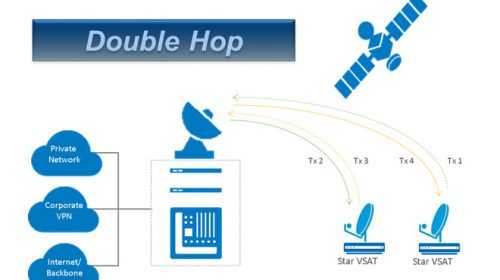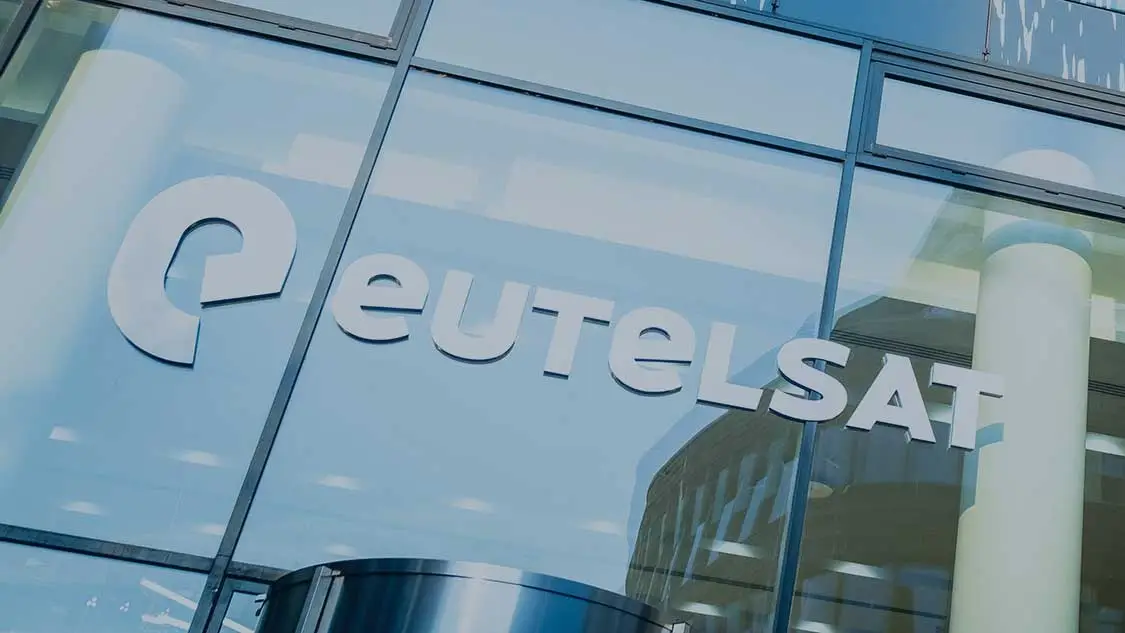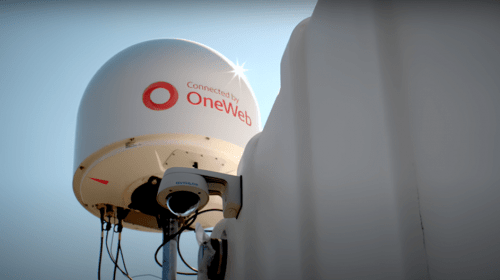May 24, 2019
BusinessCom Networks has launched a new Velocity service on SES-14, starting with the VPEC beam which covers northwest S. America. Partners are asking what Velocity is all about and why they need to start buying iQ modems. This article is directed in large part to these partners.

Think of iDirect as the Cisco of the satellite industry. Cisco does the same thing that’s happening here…. upgrading the product line to take advantage of new technology. They do it on fiber, iDirect does it on satellite.
The iDirect technology that we use to deliver services has evolved over the years. BusinessCom started off in the early 2000’s with the Infiniti operating system and NetBuilder modems. Later came Evolution and the 3/5/7/9000 and X-series of modems. Now we have Velocity and the iQ series of modems. There was always a little backward compatibility with each new operating system. For example, the iQ desktop modems we use for SES-14 will also work with Evolution, depending on the version. The X7 will also work on both Evolution and Velocity.
With each operating system upgrade, the iDirect hubs have supported larger and faster networks. The modems got faster and faster, and these operating systems evolved to take advantage of new technology such as DVB/S2-ACM which made satellite networks more reliable in the rain, and more efficient. Velocity is not a huge upgrade of the existing Evolution operating system, which is great, because Evolution was a pretty big change from Infiniti, and there were a few growing pains. Velocity adds new features, rather than rewriting the operating system, so we expect it to be stable. It’s currently used on our global maritime service and is working well, and we’ve activated our first sites on SES-14 with no issues. Velocity has several new mobility features that don’t apply to our fixed site customers. These features support airplanes, maritime vessels and large transport (train/truck) vehicles as they travel from satellite beam to satellite beam maintaining connectivity. That doesn’t matter aside from our maritime clients, as the fixed sites in our S. American market aren’t moving. Velocity also supports more advanced modcod (modulation and coding) options. To learn more about this see: www.bcsatellite.net/blog/modcod-is-not-a-hip-fish That article will likely tell you more about modcods than you probably care to know. However, what it means is more efficiency, and higher throughput, which translates to lower costs for the service. We use less capacity on the satellite to deliver N amount of bandwidth. That means we’re able to sell the new services for less than Evolution. We don’t have to buy as much bandwidth from the satellite operator, and we pass along that savings to remain competitive.
We’ll also be able to build out larger networks. There was a demand for 20 Mbps services on our Anik F1 service, for example, but there were challenges in growing the network that large, so we would propose two 10 Mbps services load-shared together when more bandwidth was needed, or an existing client wanted to increase their bandwidth beyond 10 Mbps. Larger networks should not be an issue with Velocity.
 Satnews Publishers
Satnews Publishers
Velocity offers a key feature that is pertinent for our partners and clients. SES-14 is a spot beam on an HTS satellite. HTS (High Throughput Satellite) are new satellites that provide higher capacity by leveraging new technology and techniques – basically they do with satellites, what MNOs (mobile network operators) do with cell towers for cellular networks – save a lot of money on frequency use, by using a transmission frequency over and over again in non-overlapping areas. Sound complicated? See www.bcsatellite.net/blog/understanding-the-basics-of-hts/).
Usually a satellite beam is quite large, like Anik F1 or E115WB, and it covers a very large region. HTS satellites reduce the size of those beams, and instead of a few large beams, they put up many smaller beams. We are starting with the VPEC beam in the northern part of S. America, but as demand grows, we can add other beams, increasing the coverage area. The smaller beams are “hot,” meaning they have a strong signal that uses less power from the satellite, to deliver service. This translates to lower costs. BusinessCom does not need to buy as much bandwidth to offer a service, so we can reduce the prices to our customers and partners.
There is an engineering and operational issue associated with using smaller beams, however. Until Velocity, you had to have a separate “network” which requires line cards, processors and hub slots, all of which are expensive. If the hub must have line cards and processors for all these small networks, the hub gets expensive and that cost must be built into the service. The service provider must manage multiple small networks, instead of a single large one, adding to operational costs and complexity. Velocity allows a single “network” to span multiple small beams. That keeps the hub costs to a minimum and increases efficiency.
In addition to saving on hub hardware and operational costs, why do we want larger networks? Larger networks are more efficient than small ones. If you request a web page and the maximum download bandwidth on the service is 5 Mbps, for example, then it will take longer for you to get your web page content, than if your network had a maximum download of 20 Mbps. Even if your site is limited to 1 Mbps, the content is passed over the larger, faster network carrier more quickly, freeing up the capacity for the next request. Since you get your web page faster, the network is more quickly available to get someone else’s web page. A 20 Mbps outbound (download) carrier is going to be more efficient than a 5 Mbps carrier simply because it’s faster. If we put up four 5 Mbps networks, a service provider like BusinessCom will not be able to support as many sites, as if we put up one 20 Mbps network at a given service level (like our Standard 10:1). If we can deliver the same service quality and add more sites to the service, we can reduce the service costs. The larger the network bandwidth, the more efficient it is, and the better the performance for everyone. Individual sites are limited to bandwidth levels based on what they pay for, but the bigger the shared carrier is, the better the throughput for the whole network.

All of this requires some upgrades in the hardware, which is why we need the iQ modems for SES-14. As that network grows to 20 Mbps download or more, we would not be surprised to see the pricing continue to come down. To support HTS, the modem has more work to do. It must be able to work with a central hub that is supporting sites on entirely different satellite beams. With the price reduction on iQ modems just announced by BusinessCom, the iQ modem now costs less than the reliable X1 modem our partners and customers are familiar with.
The iQ desktop modem/router is based on a new ASIC (Application Specific Integrated Circuit) chipset. Previous iDirect modems leverage FPGA (Field Programmable Gate Arrays). These are semiconductor devices that are based around a matrix of configurable logic blocks (CLBs) connected via programmable interconnects. FPGAs can be reprogrammed to desired application for functionality requirements after manufacturing. While FPGAs support re-programming flexibility, this requires additional complexity, so “hard-coded” ASIC chips are always going to be faster than FPGAs, thus we anticipate more throughput to be supported on an iQ modem. As of the writing of this article, performance numbers for TCP Sessions, Packet Per Second Forwarding, and number of concurrent VoIP calls, has not been made available, but we anticipate that they will outperform most, if not all, of the current X-series modems.
The ASIC chip in iQ modems handles the baseband or lower layer of operation, while the actual demodulation is done in software. This can be thought of as a “programmable ASIC.” The software that runs on top of the ASIC is pre-programmable, so the iQ modems should be software upgradable to support new features, that are traditionally run in hardware, such as new modulations, FEC codes, etc. The new iQ modem supports 5% roll-off factors, which is another method to save on satellite capacity. We can squeeze more carriers into the same amount of capacity on the satellite, which again contributes to reduced pricing for services.
Finally, the iQ modems support four demodulators, two supporting DVB-S2 carriers, and two supporting the more efficient DVB-S2X carriers. iDirect has not announced what these other demodulators will be used for, but the author assumes that they may be used in the future to support the new constellations of LEO (Low Earth Orbit) satellites that are being deployed by companies such as SpaceX (Starlink), Telesat LEO, OneWeb, LEOSat and even Amazon. Alternatively, they could be used to support mesh networks. We will provide more information as it becomes available.





